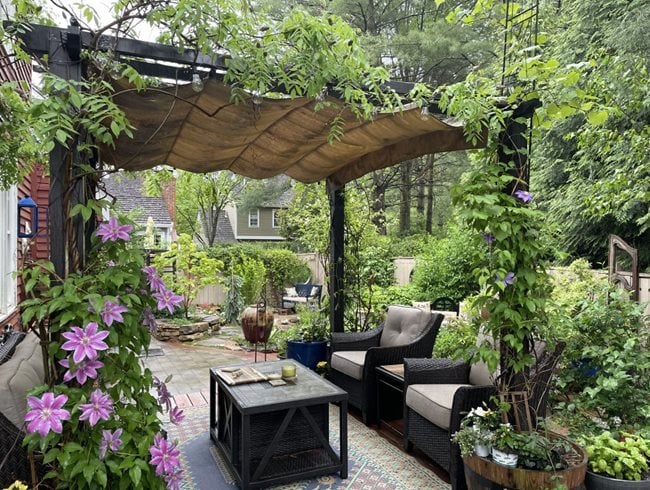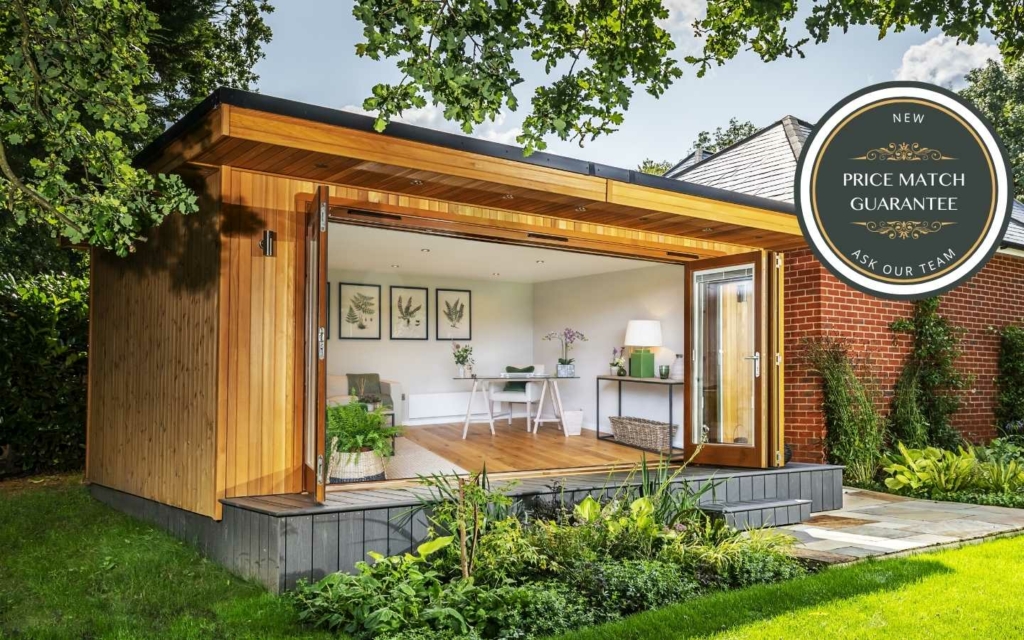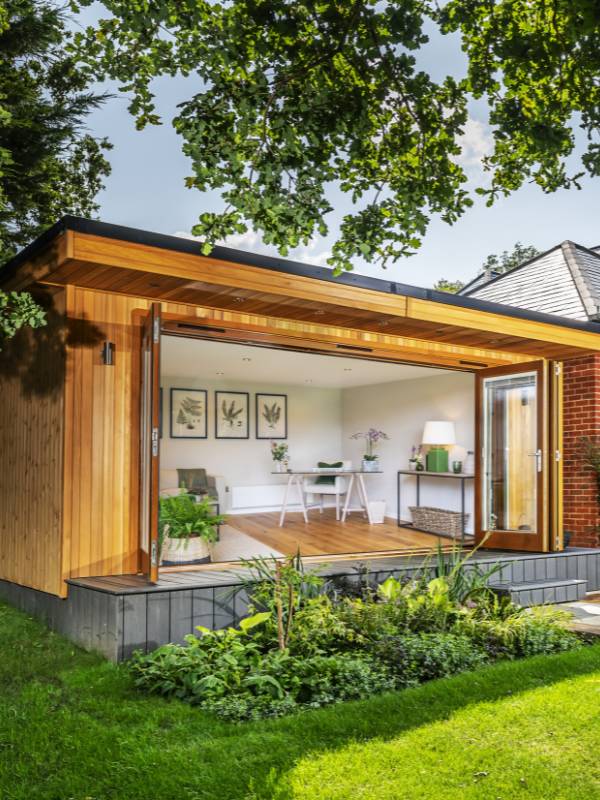Great Ideas For Planning Permission On Garden Outhouses
Great Ideas For Planning Permission On Garden Outhouses
Blog Article
What Is The Permission For Planning Required For Garden Rooms And Other Modifications To The Use Of Space?
The notion of "change in use" is crucial when building garden offices, conservatories or outhouses. These are the most important aspects to be considered when obtaining a planning permit that pertains to a change of usage: Change from non-residential use to residential:
You will need planning permission for converting the structure that is not residential, such as an agricultural building or garage, into an office space or a living space. This is because there could have to be a change of use classification.
Garden Rooms as Living Accommodation:
The use of an outdoor space for distinct living area (e.g. as a rental unit, guesthouse or any other similar arrangement) is a shift in use. To ensure that the structure is compliant with all requirements for residential properties, planning permission will be required.
Business Use
The planning permission might be needed in the event that you plan to utilize your garden area or conservatory as a business (e.g. an office space for home-based businesses that have frequent visitors or employess). This is due the possible impacts on neighboring areas such as noise, parking and traffic.
Use in Education or the Community:
A planning permit is required for the conversion of a garden building to an educational or community space (such a classroom, meeting hall or auditorium). The local authorities will assess the suitability of location and its impact on the surrounding area.
Impact on local infrastructure
Any change of use that directly impacts the local infrastructure (e.g. roads, drainage systems, or public services) usually requires planning permission. This will be evaluated by the local authority for planning during the application process.
Dual Use
For properties that will have an unmixed use (such as part-residential, part-commercial), planning permission is often necessary to clearly define and govern the different uses within the property.
A Boost in Footfall
The local planning authority will need to approve the change in the event that it could lead to an increase in traffic or footfall.
Building Regulations compliance:
While not strictly a permit issue, any change of usage must be in line with building regulations in order to ensure safety, health, and energy efficiency standards. This is relevant in particular when it comes to conversions of non-habitable areas to habitable areas.
Environmental Impact:
Planning permission is needed for any change in use that could affect the environment. This could include converting farmland into residential property. As part of your application, you may be required to conduct an environmental review.
Impact on Amenities and Community:
A key consideration is how the project will impact on the local population and its character. As an example, to transform a room within the garden to a cafe shop requires planning permission. This is to ensure that it aligns itself with community plans while preserving the local amenities.
Designated Zones
In areas designated as conservation zones, National Parks (AONB), or Areas of Outstanding Natural Beauty modifications in the use of the area are subject to more stringent controls to ensure the integrity of the region. This is why the need for planning permission is required.
Local Planning Policies
Local authorities for planning have specific policies regarding change of usage, and they can differ in a significant way. It is essential to review these policies to know the changes that require permission, and the criteria that must be met.
Planning permits are typically required to make a major change in the use or location of a gardenroom, conservatory office, outhouse, or extension. This will ensure that the new use is appropriate to the area, and is in line with local, national, and environmental planning policies and considers potential impacts. A prompt consultation with the local planning authority is vital to identify specific requirements and to obtain approvals. View the top what are the planning regulations for garden rooms? for blog info including how to get power to a garden room, luxury outhouse, composite summer house, my outhouse, garden room vs extension, garden outhouses, luxury outhouse, do you need planning permission for a garden room, garden rooms, insulated garden buildings and more.
What Is The Maximum Height For Garden Rooms And Other Structures?
When building conservatories, garden rooms outhouses, gardens offices or extensions, specific limitations on height will determine if planning permission is required. Here are the key requirements regarding height that you should be aware of General Height Limits:
The maximum height allowed for an outbuilding without a connection (or extension) that has a dual-pitched roof (such as the Gable roof) is 4 meters.
The other types of roof (flat or single-pitched) should not exceed three meters in height. The height maximum for any type of roof (flat or single-pitched) is 3 meters.
Distance from boundary:
The maximum height is 2.5 meters in the event that the structure is within 2 metres of the property's boundary. This applies to sheds, garden rooms, and other outbuildings similar to it.
Eaves Height:
For any building, the maximum eaves (the height from the lowest point on the roof) can not be more than 2.5 meters.
Extensions, conservatories and other types of conservatories:
Height of rear extensions with one story must not exceed four meters. This is inclusive of the parapet wall as well as the roof.
Side Extensions
Extensions to the sides of the house must not be taller than 4 meters, and not wider than half of the width of the original.
Special Roofs
Structures that have a flat-roof are usually limited to a height of no greater than 3 meters.
Additional restrictions on designated areas:
In designated conservation zones, Areas of Outstanding Natural Beauty and other designated areas there may be height restrictions that are stricter and permits are required for structures that would otherwise be allowed.
Constructions in National Parks:
Similar to designated areas, structures within National Parks may have additional height limitations that require approval for planning.
Design of the Roof
The elevation of the top part of the roof (excluding chimneys and antennas.) Consideration should be given to the elevation of the top part of the roof (excluding chimneys or antennas.). Planning permission may be required if the highest point of the structure exceeds the building limit that is permitted.
Neighbours' Impact:
Planning permission is required even if the structure does not exceed the height limit. This could be required in the event of significant effects on sunlight, privacy or views of neighbouring properties.
Maximum Height All-Over:
The height of the entire structure cannot exceed 4 metres. For example, a garden with a rooftop that has two pitches cannot be taller than four meters at its top.
Decking and Platforms
The decking, platforms or other structures that are attached to the building must not elevate the ground more than 3 meters. This is to avoid the need for an approval for planning.
Always visit your local planning authority's website to see any new rules or any changes. Even if a project is within the permitted rights of development, local modifications or particular property requirements may require permission for planning. Read the top rated how big garden room without planning permission for website recommendations including what size garden room without planning permission, do i need planning permission for a garden room with toilet, garden out house, composite summer house, how to get power to a garden room, garden rooms near me, costco garden office, outhouse garden rooms, outhouse garden rooms, garden office electrics and more.
What Kind Of Permission Do I Require For Gardens, Etc. In Terms Of Agricultural Lands
If you're thinking about building gardens rooms, conservatories, outhouses, garden offices or extensions on land that is agricultural, there are specific planning permission requirements and restrictions to be aware of. Here are the key elements Change of Use
Agricultural land is typically designated for farming and other related activities. Planning permission is usually needed to alter the land's use to garden structures or residential. This is because it requires changes to its agriculture purpose.
Permitted Development Rights:
The land of agriculture is usually subject to different limitations on development than residential land. For instance, certain types of agricultural buildings can be built without full planning permission. However, these rights are usually for agricultural-related structures, not gardens or offices for residential properties.
Size and Scale
The size and scale of the proposed structure could determine whether a permit for planning is needed. Planning permission is typically needed for large structures or structures that cover a large area.
The impact on agricultural use
If the new structure decreases the amount of land suitable for livestock or crops, then planning permission may be required.
Green Belt Land:
If the land for agriculture is also designated as Green Belt, there are additional restrictions aimed at preventing urban sprawl and protecting open space. Planning permission is typically required for any new development on Green Belt land.
Design and Appearance
The style of the structure and its style must blend into the rural character of the area. The planning permit will ensure that the structure doesn't adversely affect the landscape and visual amenity.
Environmental Impact:
Construction on agricultural lands must consider the impact on the natural environment. The planning approval for a new structure may require a detailed environmental assessment. This is to ensure the building does not harm the ecosystems of the area or harm wildlife.
Buildings close to existing ones:
The planning requirements could be impacted by the close proximity of a proposed garden office or space to an existing agricultural building. Constructions that are built near existing farm buildings may be viewed differently from those in open fields.
Access and Infrastructure
It is important to consider the impact of the new building on access and infrastructure, including roads, water and waste management. The planning permit will decide if the existing infrastructure can support a new building.
Use Class Order
Planning law specifies the precise purposes of agricultural land. It is typical to require permission to plan in order to alter the land's classification to permit non-agricultural use.
Local Planning Policy:
Local planning authorities are governed by specific policies for agricultural land. These policies determine whether or not planning approval for non-agricultural buildings is granted in accordance with the local development plans and community requirements into consideration.
National Planning Policy Framework
In the UK, National Planning Policy Framework (NPPF) provides guidelines as to how land can be best developed and used. The NPPF is used to assess the validity of planning permissions for structures built on land used for agriculture. It emphasizes the sustainable rural development and also protects these areas.
Planning permission is required for conservatories, extensions, outhouses or garden offices on agricultural land. This is because the land needs to be modified in order to comply with local and national planning policy. Contact the local planning authority for more information on the required requirements and then obtain the approvals you need. Read the best how to install decking on grass for site tips including do i need planning permission for a garden room with toilet, out house for garden, outhouse buildings, garden rooms, garden office hertfordshire, Tring garden rooms, garden rooms near me, costco garden room, armoured cable for garden room, garden room conservatory and more.